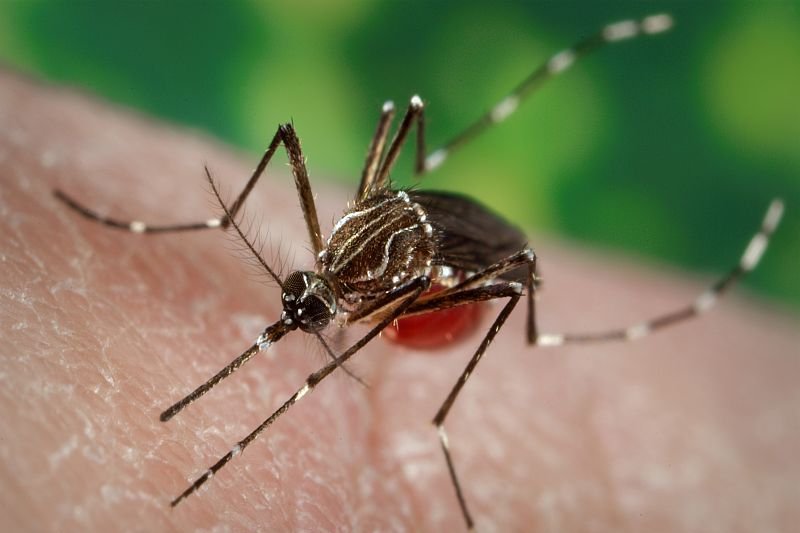U.S. health officials are monitoring a new outbreak of eastern equine encephalitis, or EEE, a mosquito-borne disease that can be fatal. Photo courtesy of the CDC
Nov. 21 (UPI) -- An old disease transmitted by mosquitoes called eastern equine encephalitis has reared its head in eight U.S. states so far in 2019, but health officials emphasize there's no need to bug out.
In a commentary published Thursday in the New England Journal of Medicine, officials from the National Institute of Allergy and Infectious Diseases noted that, as of Nov 12, there have been 36 confirmed cases of eastern equine encephalitis, or EEE, this year. In all, 14 of these cases were fatal.
"Although EEE isn't a major threat at this time, the public needs to be aware that it's out there," NIAID Director Anthony S. Fauci, MD, told UPI.
To date, cases of EEE have been confirmed in Connecticut, Indiana, Massachusetts, Michigan, North Carolina, New Jersey, Rhode Island and Tennessee. Massachusetts and Michigan lead the way with 12 and 10 cases, respectively.
The fact that many of these states, and other regions in the country, are moving into the colder winter months likely means few if any new cases of EEE will emerge before the end of the year, because mosquitoes won't be as common, Fauci said. However, that could change come springtime, he added.
EEE has actually been around for centuries -- but the volume of cases in 2019 is highly unusual.
According to NIAID figures in the commentary, there were total of 12 EEE outbreaks in the U.S. between 1831 and 1959. However, Fauci added, the 36 reported in 2019 are the most in the country since 15 were documented in 2012. Generally, fewer than 10 cases are confirmed across the country annually, per figures from the Centers for Disease Control and Prevention.
EEE now joins a growing list of diseases transmitted by mosquitoes that have struck the U.S. in recent years. Other examples include dengue, West Nile, chikungunya, Zika and Powassan.
At present, there is no easy and accurate test available to diagnose EEE, and there are no drugs to treat it or vaccines to prevent it. Those diagnosed with EEE are currently treated with supportive care, which often includes intensive care in a hospital and ventilator assistance. EEE does not spread from human to human.
The disease is caused by the eastern equine encephalitis virus, or EEEV, which is spread between Culiseta melanura mosquitoes and various tree-perching birds found in forested wetlands.
Culiseta melanura mosquitoes don't bite humans, Fauci said, but, occasionally, other mosquito species -- including the human-biting Aedes aegypti -- can transmit the virus to people and other mammals after biting infected birds.
According to the CDC, only about 5 percent of human EEEV infections progress to EEE, and they do so usually within three to 10 days of infection.
Early symptoms include fever, malaise, intense headache, muscle aches, nausea and vomiting, Fauci and his co-authors noted, and roughly one third of those who develop these symptoms will die, while others may suffer permanent and severe brain damage.
The CDC advises that those over 50 years of age and under 15 years of age seem to be at greatest risk for developing severe disease when infected with EEEV.
As with any mosquito-borne disease, Fauci suggested that people can reduce their risk for EEE by taking steps to avoid bites. Wearing long pants and/or long-sleeve shirts and using insect repellent can help, he said.















